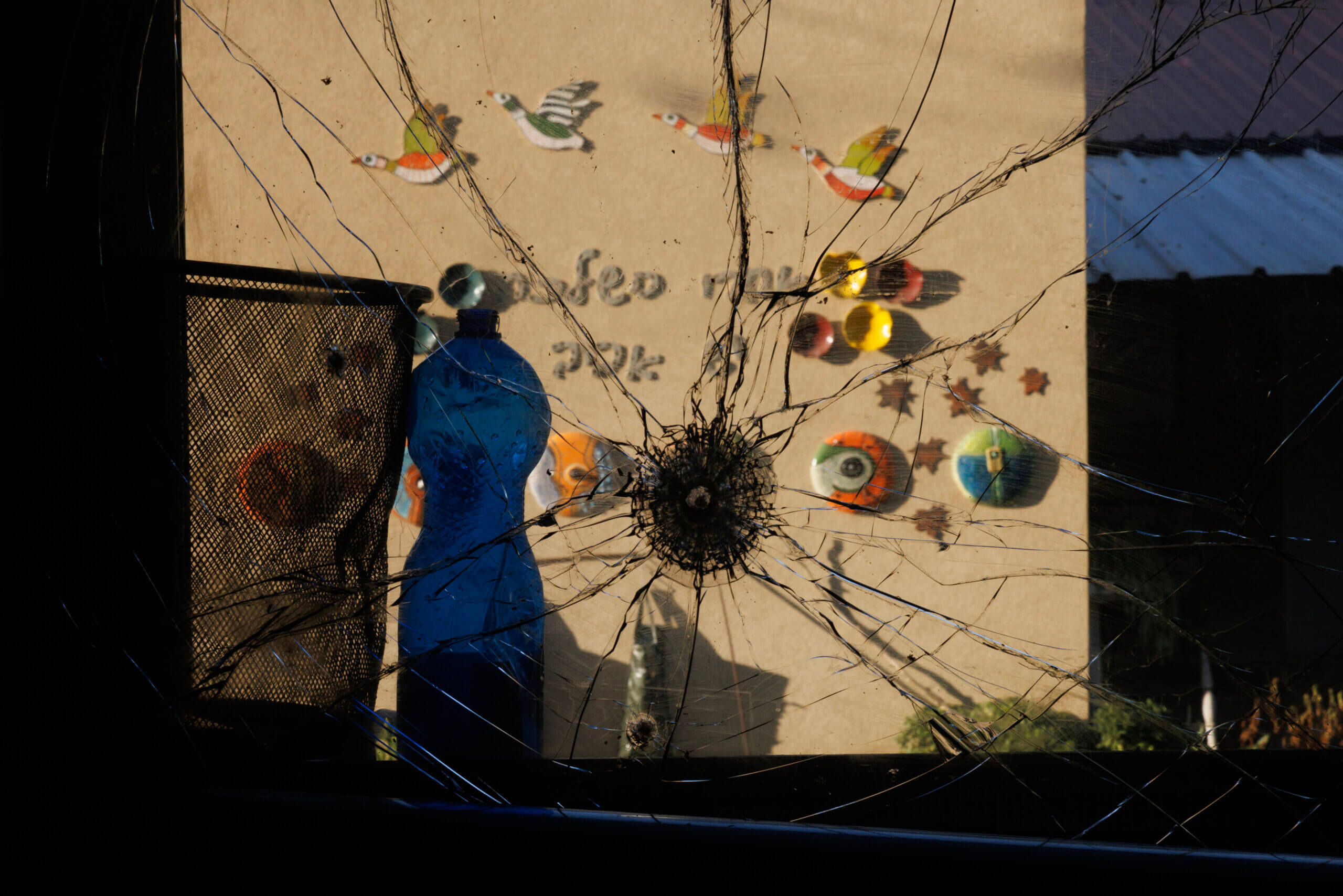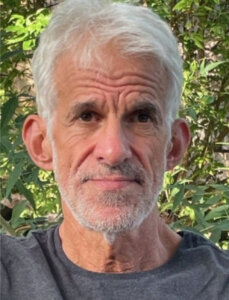Why so many people call the Oct. 7 massacre a ‘pogrom’ — and what they miss when they do so
Yosef Yerushalmi would have had a lot to say about our tendency to fit new horrors into old patterns

a bullet hole is seen in the window of a bedroom at Kibbutz Holit. Photo by Getty Images
Pogrom.
Rarely has just one word done so much to join together so many pundits and politicians. Since the events of Oct. 7, a term we associated with the mostly distant past, spanning the medieval Crusades and modern Czars, has become commonplace. In our country, liberals and conservatives, Jews and non-Jews, Republicans and Democrats have all invoked the word “pogrom” to describe Hamas’ massacre in Israel of more than 1,300 men, women and children.
There is little reason to wonder over the insistent iteration of this word, especially for American Jews of Russian ancestry. No single word better captures the searing reality of Jewish life in Russia from the late 19th to early 20th centuries than pogrom. It derives from verbpogromit’, the Russian verb for break or attack, and applies to the breaking and attacking of Russian Jews from 1881 and the assassination of Czar Alexander II to 1905 and the bloody events in Kishniev.
With the gradual opening of the Russian archives after 1989, historians have been able to trace the increasing intensity of the violence in Russia. We now know that in 1881, approximately 25 people were killed in 250 pogroms, while by 1905 the numbers grew exponentially: There were 876 deaths in nearly 1000 separate pogroms. Thanks to the work of the historian John Klier, we also know that the Czarist authorities neither choreographed nor encouraged the pogroms. Instead, they were mostly spontaneous and perhaps as much about managing social status as they were about murdering Jews.
But do these historical advances in our knowledge of pogroms matter for those of us who are not historians? This question haunted the late Yosef Yerushalmi, one of the 20th century’s most important scholars of Jewish history. In his last and most influential book, Zakhor: Jewish History & Jewish Memory, Yersushalmi struggled with this question. It was a struggle in which the history of pogroms, now applied to events throughout human history, plays a pivotal role.
In this slim text, Yerushalmi dwells on the inherent tension in Judaism between remembering and writing the past. “While memory of the past was always a central component of Jewish experience,” he observed, “the historian was not its primary custodian.”
Though obsessed with the meaning of history, Jews were also ambivalent about the writing of history. Even seismic events like the 1492 expulsion from Spain or the 1648 massacres in Poland failed to spark a sustained interest among scholarly Jews in historical narrative. (But they did, on the other hand, spur the growth of Jewish mysticism and the writings of Kabbalists like Isaac Luria.)
Yerushalmi explains this allergy to history by looking back at the destruction of the Second Temple. This became the ur-catastrophe, the one-size-fits-all cataclysm that framed everything that was to follow. Traumatized by this event — one reinforced over the centuries by other violent events large and small — European Jewry decided, in effect, that they had acquired all the meaning they needed. The ancient rabbis, Yerushalmi observes, no longer cared about mundane history. Armed with that metahistorical text, the Torah, why bother? As Yerushalmi explains, the Bible “was not only a repository of past history, but a revealed pattern of the whole of history.”
How much easier to assimilate the new into the old, holding fast to the traditional conception of history, keeping us all on track for the messianic era. Like a baker who, tossing another handful of flour into a great and crusty bowl of sourdough, blends the old and new, medieval and early modern Jews tossed new events into the great and crusty rolls of commentaries, kneading together the recent and ancient. If the future had already been made manifest in the ancient past, if meaning had already been forever fixed, why bother kneading a different interpretation with new events? “What had happened long ago had determined what had occurred since, and even provided the fundamental explanations for what was still transpiring.”
Yerushalmi argues this remained true even in the modern age and the birth of historiography as an academic pursuit and profession. And yet the remarkable work achieved by scholars of Jewish history since the mid-19th century, Yerushalmi believes, does not amount to a hill of beans. Instead, he argues that it is popular literature and, yes, narrow ideologies, not scholarly monographs and conferences, that have shaped the general understanding of the Jewish past. In despair, he writes “Many Jews today are in search of a past, but they patently do not want the past that is offered by the historian.”
What would Yerushalmi, who died in 2009, make of the sudden reflex, one that goes back centuries, to speak of the unspeakable events of this Simchat Torah as a “pogrom?” What happened was many terrible things, but most of those things have little in common with the Cossacks or the Czars. And yet, the reflex to fit new events into old compartments relieves us of the need to truly see them. Even the most terrible events, Yerushalmi remarked, “are somehow less terrifying when viewed within old patterns rather than in their bewildering specificity.” Even, it seems, the recent “pogrom” in Israel.
A message from our Publisher & CEO Rachel Fishman Feddersen

I hope you appreciated this article. Before you go, I’d like to ask you to please support the Forward’s award-winning, nonprofit journalism so that we can be prepared for whatever news 2025 brings.
At a time when other newsrooms are closing or cutting back, the Forward has removed its paywall and invested additional resources to report on the ground from Israel and around the U.S. on the impact of the war, rising antisemitism and polarized discourse.
Readers like you make it all possible. Support our work by becoming a Forward Member and connect with our journalism and your community.
— Rachel Fishman Feddersen, Publisher and CEO



























